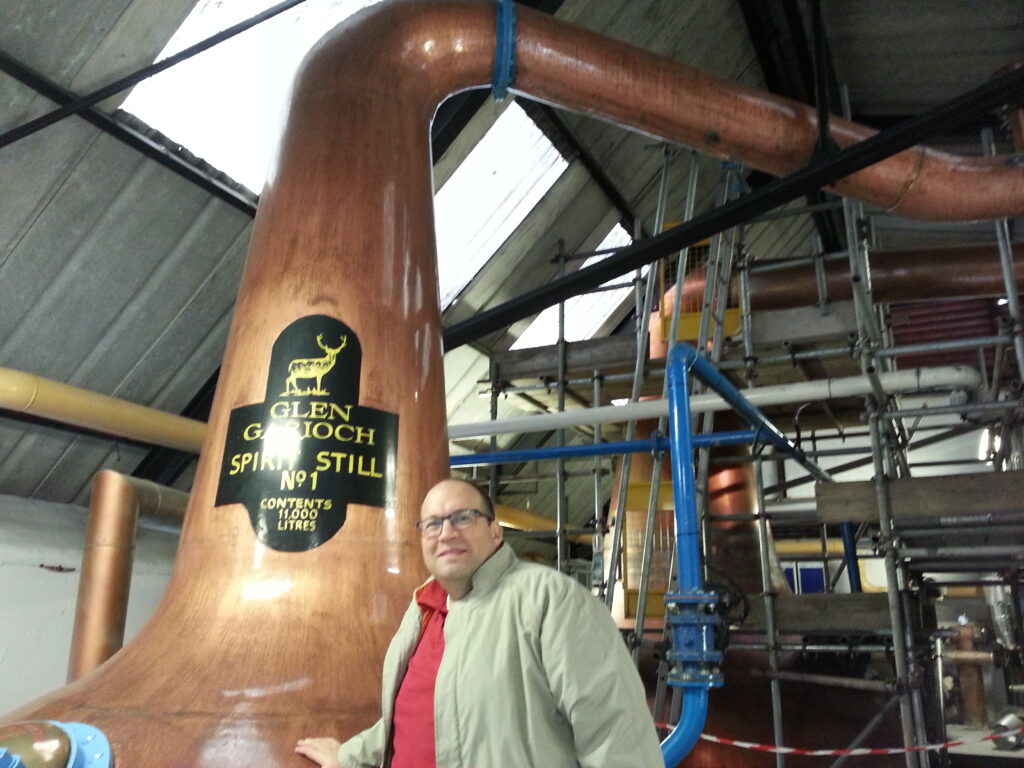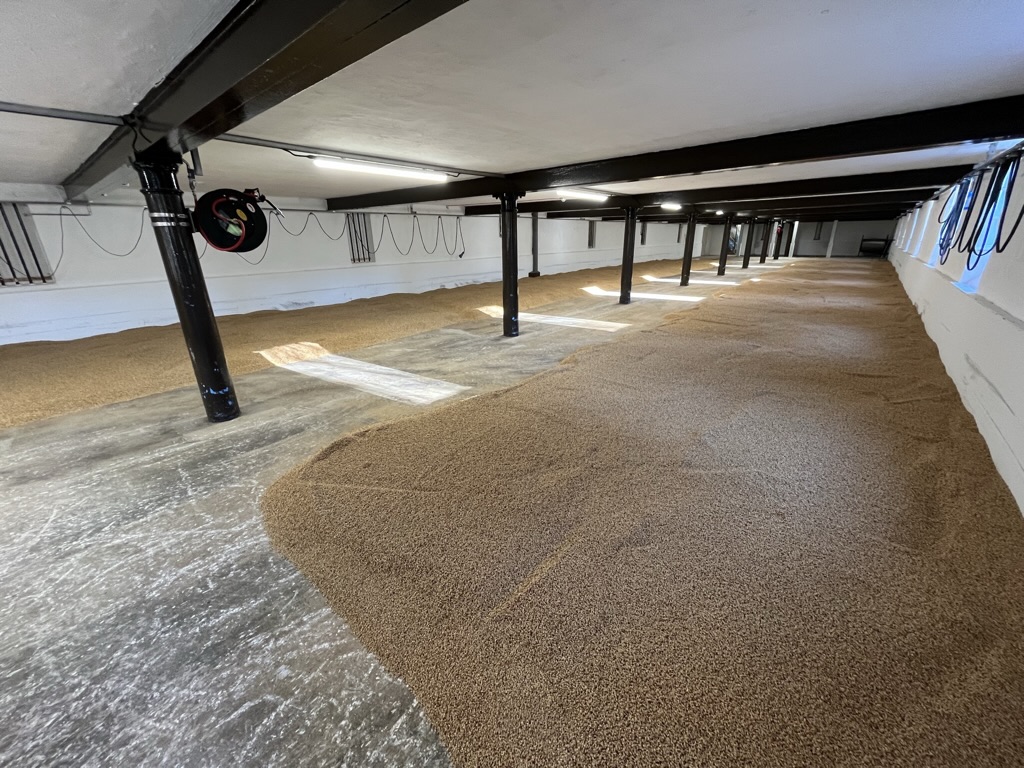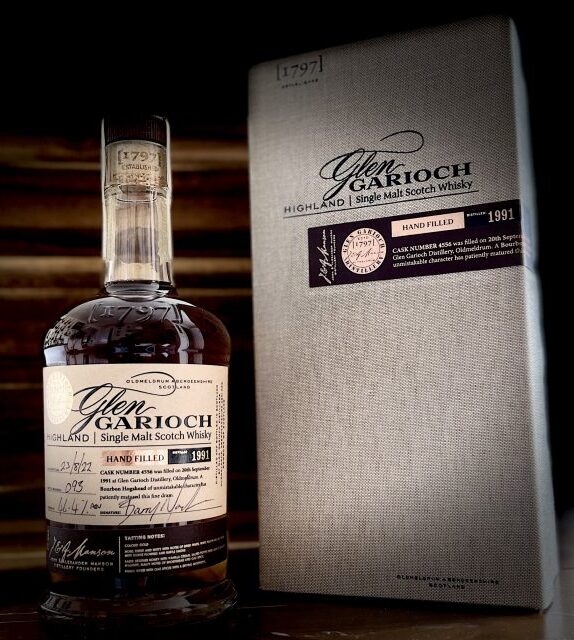I think none of you would be overly surprised that getting to Glen Garioch on any trip to Scotland is a given for me. We each have our favorite distillery, the one we’ll go out of our way to swing by for a hello and a BYO even if we’re not doing a tour or if our pilgrimage is in a different region of Scotland. Incidentally, if you haven’t joined us at The Glen Garioch Appreciation Society on Facebook, I welcome you there!
Obviously, if you remove the personal connections, visiting any distillery for an in-depth tour for the second time might seem redundant. We all do it on trips to Scotland, it’s the nature of the beast. In fact, I have taken several distillery tours or experiences for the second time, including Glen Garioch, GlenDronach, Springbank, Bunnahabhain, Strathisla, Bruichladdich, Ardbeg and Laphroaig. Some have not changed at all. In others, it’s a whole new experience. But in the case of the new and exciting 2022 Glen Garioch, so much has changed that it’s really like a first visit. If you want to read an account of my previous visit, you can do that here.
I’ll start off with the most exciting change, the floor maltings. Glen Garioch has joined the very short and exclusive list of distilleries that malt their own barley. Out of some 140 distilleries in Scotland, you can count on your fingers the distilleries that malt their own. The eight (nine if you count Glengyle, with malt and workforce from Springbank) are Glen Garioch, Bowmore, Laphroaig, Kilchoman, Balvenie, BenRiach, Springbank, Glengyle and Highland Park. At Glen Garioch, 25% of the malt used is malted on site, and it’s all Laureate barley.
The reason a distillery would want to malt its own barley, besides controlling peat levels for peated malt (all malting distilleries basically make the floor malt at a different ppm level to the sourced malt), is that there’s a lot less breakdown of the kernels in floor malting. This translates into much more flavor. At Glen Garioch, there are 11.5 tons of barley per floor. The outsourced malt comes from Crisp Malting Group, and according to the Crisp site, the barley is mostly local to the Garioch Valley (Glen Garioch….😉).
When you think of self malt, the first thought that comes to mind is, obviously, peat. What else would you use a kiln for, right?
Glen Garioch used to be lightly peated before the 1995 closure, and in my mind, the malting floors were implemented in order to bring back that character, with a peat burning kiln (of which Glen garioch has two kilns feeding one drying floor). However, Glen Garioch who pioneered heat recovery systems in the 1970s with the famous tomato greenhouses (alongside Bowmore’s pool heaters), and walking into the kiln room, I have to admit that the last thing I expected was this:
I expected to see a heap of peat and a roaring fire, with smoke drifting lazily out of the double pagoda roof. I dreamt of throwing a shovelful of peat on the fire at Glen Garioch….
Alas, what I really found at the kiln was this ingenious contraption:
This is a heat recovery system, which uses the heat from the stills to heat air that is blown through a huge fan straight into the kilning floor, essentially creating a huge hot air dryer:
This system uses 15% less energy, 54% less water and adds no carbon emissions to the atmosphere. That’s utterly amazing. Those of us who were hoping for a return to the style of yesteryear, well, that doesn’t seem to be in the cards, or at least not with the floor maltings, although I suspect plans were made for such a possibility.
The next step is making the grist. The outsourced barley is mixed with the self-malted barley at a ratio of 3:1, and four tons make their way to the mill. They’re not ground together, as the one ton of self-malted barley has slightly different grind proportions to the standard 70-20-10. But once milling is done, it’s on to the 4 ton Lauter mash tun.
There are 19 mashes per week, each consisting of 4 tons of barley, which means that the distillery needs to have two working malting floors at any given time to make the 19 tons of self malt needed. Water temperatures have changed a bit since my last visit, with the biggest change made with the second waters going down to 77°C from 90°. First and second waters make up 20,000 liters of wort, which go into one of the nine stainless steel washbacks (yes, there’s a new washback too).
Fermentation time is now 72 hours, up from around 50, with a clear wort. There were some experiments with the yeast, and a switch was made to liquid yeast and a combination of distiller’s yeast and brewer’s yeast is used.
Another place where HUGE changes have taken place is the still house. First of all, the unused still has been removed from the stillhouse. You’ll now find the spacious stillhouse with only one pair of stills. However, gone are the LONG lyne arms that created a lot of copper contact once the vapors left the still body (largely unimpeded).

Old Stillhouse (2017). The wash still isn’t in the picture as I’m standing in the area that is now clear. Look up and notice the Lyne Arm Crossing the Room….|Photo rights: Michael Bendavid
The new configuration is very clean. The unused still is gone, and both the wash and spirit still have a new sharply downward pointing lyne arms, in the steepest downward incline in Scotland. The wash still still has a pretty long lyne arm, but it’s nowhere near the distances the vapor had to travel until to the shell and tube condensers.
Add to that a direct firing of the stills and a pretty massive expansion of the heart cut (from 74%-69% in the past, to 74% to around 63% now) and you’ve got a whole different new make spirit, that should be far more oily and weighty than was produced in the past. I’m so intrigued by these changes, that I’m going to be traveling to the distillery’s Rare Fayer event next week to take part in a workshop examining the evolution of the new make spirit over recent years. While I did bring back a sample of the new make with me for this post, I think reporting of the comparison would be more interesting, and I can’t wait to share this information with you!
To sum up the wonderful changes at Glen Garioch, we have (unpeated) floor maltings of 25% of the barley, lower mashing temperatures, 50% longer fermentation times, directly fired wash still, wider heart cut, much shorter steeply inclined lyne arms. Obviously, each of these is enough to change the new make spirit and all of them together create a whole new balance point for the distillery character. Boy, do I look forward to going deeper into the wonderful new developments at the distillery in a post following the Rare Fayre.
Glen Garioch Bottle Your Own, 1991 31 Year Old Cask 4556 (Ex-Bourbon), Filled 20 September, 1991 (46.4% ABV, NCF, NC)
Appearance: Gold, very slow and viscous legs slowly peeling off a very sturdy necklace.
Nose: Sweet floral honey, orange peel, ginger, a faint hint of peat and a very light saltiness. Together with toffee, some tropical fruit appear after some time in the glass, with an unexpected note of pineapple. This is slightly farmy and dusty, which is very typical of these years for Glen Garioch.
Palate: Slightly fizzy citrusy sweetness, white pepper, hint of pineapple. There’s a chalky smoky dryness that sits on the tongue when you hold the whisky in your mouth for a bit.
Linger: A faint sweetness on the tongue with a somewhat dirty smokiness. The smoky dryness sits at the back of the tongue and the sides of the cheeks, with w twang of smoke and spice down the gullet.
Conclusion: 1991 is one of my favorite vintages for Glen Garioch, as I have mentioned in my review of the 2010 Vintage 1991 (Batch 38) and at 31 years of age, this remains just as lovely with the added complexity of another 12 years in the cask. I’m not sure how far we are from the bottom of this cask (and it can’t be too far away, but it’s well worth the price, with still conforms with my rule of thumb for value of around £10 per year of maturation for special bottles.













